Hotopu Bay, Raiatea

Jackamy
Paul & Derry Harper
Mon 24 May 2010 08:51
|
16:50.678S 151:21.861W
Monday 24th May
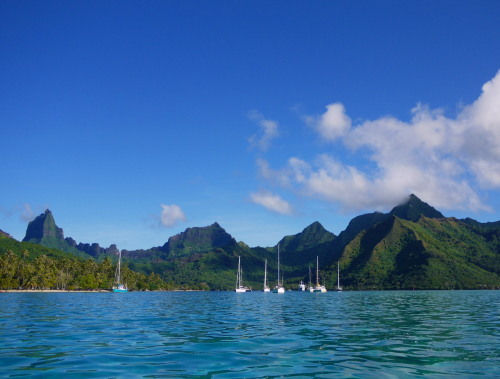 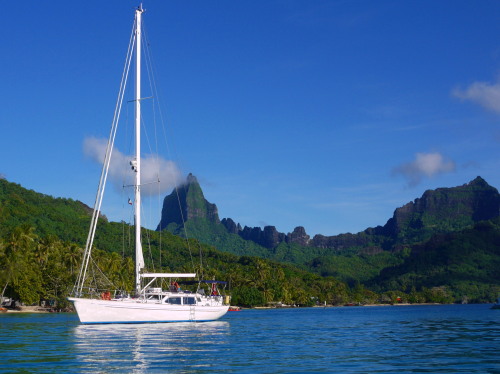 Jackamy anchored in the
beautiful Robinson's Cove, Moorea
We eventually brought ourselves to leave the
magical Moorea and we set off at 16.00 yesterday evening. The logical next stop
would be the island of Huahine but we have continued another 20 miles to
Raiatea. The reason being that all the rally boats have headed for Huahine at
the same time and although there are a number of anchorages you are still likely
to be travelling around in crowds. When we made our way through the Tuamotus
ahead of all the other boats we had a fantastic experience meeting the locals
and going with the flow. In smaller groups you blend in more and get to live
life as the Polynesians do whereas in bigger groups things just become
complicated. Plus we get to have these beautiful anchorages all to
ourselves, well us, Blue Magic and Miss Tippy but we don't mind that, it's nice
not to be completely alone. We will head back to Huahine once we have explored
Raiatea and it's sister island Tahaa, so we won't be missing out on
anything.
We were lucky in that we managed to sail
some of the 89 miles from Moorea. There was no wind when we set off but a squall
came through and the wind just stayed with us. It was a busy night, at one point
we counted 12 boats around us, 2 were heading the opposite way but 10 were BWR
boats. It was also an uncomfortable night, we were rolling all over the place,
so for Paul it was a night with very little sleep.
Hotopu Bay where we are anchored now feels a
world removed from Moorea and more so Tahiti. The island definitely
feels less touristy and the locals fishing on the reef and from their
outriggers back this feeling up. The way of life here is more traditional, the
locals still live life on their own terms; slowly, with a profound respect for
their heritage and history. These sister islands are home to some of Polynesia's
most important ancient places of worship so it is no surprise that they emanate
a magical, mythical and mysterious vibe. Raiatea is home to Marae Taputapuatea,
the most important traditional temple in French Polynesia.
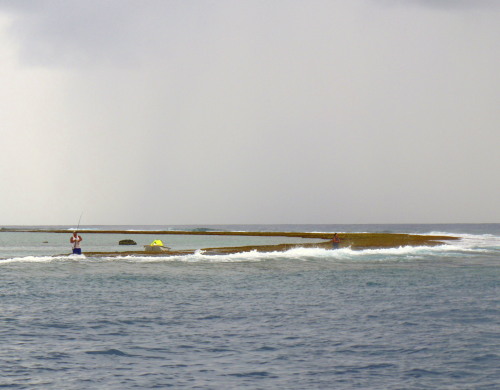
 Two men fishing on the
reef
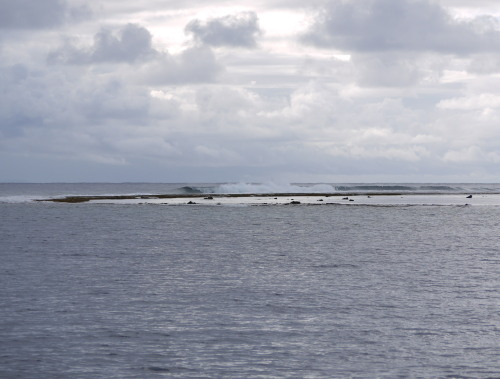
 Outside the reef in the ocean
the seas were choppy, waves were crashing into the reef but just the other side
of the reef, in the lagoon, the seas were as flat as a pancake
 A little house/hut out on the
reef, not too sure whether it is used or not, it was a very strange place to
have a building though
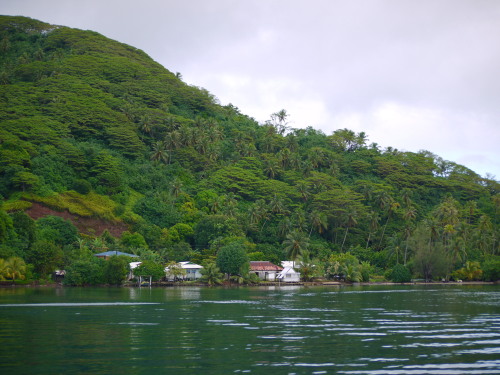
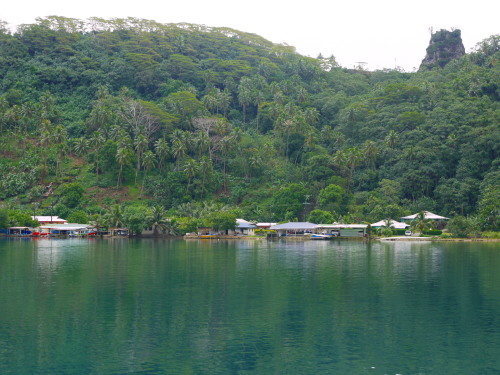 The bay is very lush with a few
homes lining the shore
  To the left is a mother fishing
with her two sons and two the right a lady fishes in water up to her shoulders
with a young man

 Meanwhile two young boys were
doing circuits around Jackamy in their canoes
Just like Bank Holidays at home we have
spent most of ours sat inside as it has been raining on and off ever since we
anchored at around 08.30 this morning. But this afternoon I think we were all so
fed up of being couped up inside the boat we decided to head out to explore the
Marae Taputaputea whether it was raining or not. I think this is one of the
largest marae sites if not the largest. It was so important to the ancient
Polynesians that any marae built on another island had to imcorporate one of the
Taputaputea's stones as a symbol of allegiance - even one in the Cook Islands
and Hawaii!
The 'marae' was the place reserved for
ceremonial activity in both the social and religious realm of the ancient
Polynesians. They were monuments of imposing size which aroused the interest of
early European explorers at the end of the 17th Century.

 The main platform
 The 'unu'
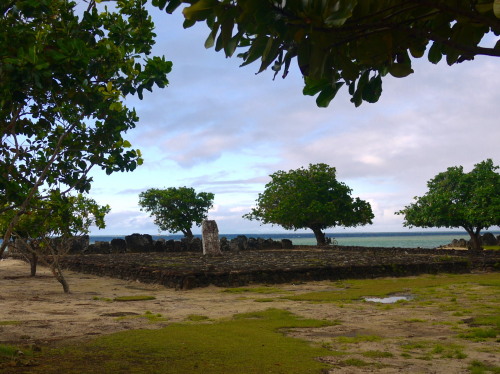
 Another platform with a
spectacular view and a banian tree
The 'unu' were carved round or slab like
sculpted posts situated upon or in front of the ahu platform or marae. No
example of these objects have been conserved in museum collections and
illustrations of them are rare. The 'unu' were carved with representations of
birds or dogs. Some were sculted with anthropomorphic representations, others
still retained the form of the original trees from which they were cut, and
there were also those which were geometric in design. Those unu of a geometric
design were erected generally to commemorate a human sacrifice.
A number of birds and certain fish,
particularly species of heron, a kingfisher and one or two species of plover
used to frequent the trees which stood growing within the enclosure of the
temple were the object of their cult. These birds had a sacred charcater and
were generally fed with offerings. The natives imagined that their gods
manifested themselves in these birds.
Certain trees and plants within the
enclosure of the marae were considered as emanations of gods and spirits. Their
branches housed the birds which were themselves the messengers of the
gods.
Three little girls kept us entertained
around the sights and practised their English with us but they weren't as
innocent as they first seemed. They are obviously used to having yachts
visit and soon began asking for photos, hats and money.

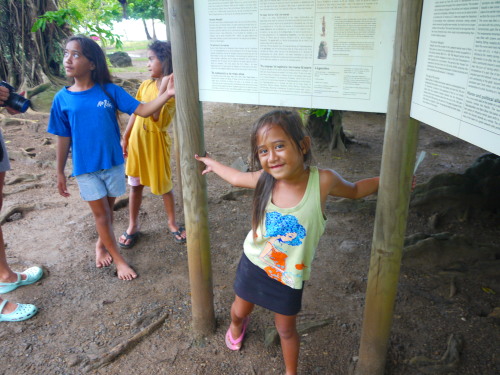 On the walk back to the boats we
found the snack bar and a dog sleeping on top of an old ford fiesta. A bit of a
strange day but definitely worth venturing out into the bad weather, although we
did manage to stay dry the whole time we were out and about.

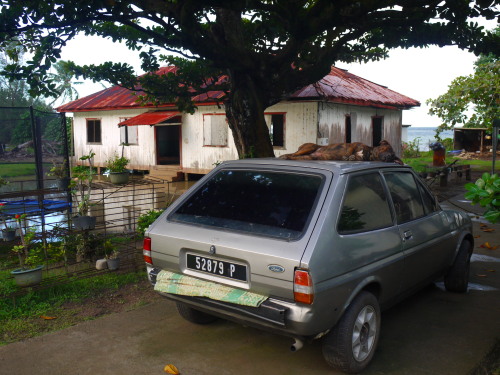 |